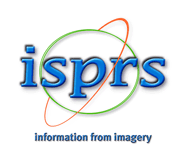A Perspective on the Standardization Process of 3D City Models in Japan: History of Geospatial Information Policy and Government Commitment to Standardization
Keywords: Standards, Urban Digital Twin, CityGML Project PLATEAU, Geospatial Information Policy
Abstract. Japan's geospatial information policy has evolved significantly since the 1995 Great Hanshin-Awaji Earthquake, marked by the enactment of the Basic Act on the Advancement of Utilization of Geospatial Information in 2007 and the recent "Project PLATEAU," a 3D city model initiative launched in 2020. This paper analyses the 30-year history of Japan's geospatial information policy and focuses on the impact of PLATEAU on administration and industry. The policy's journey, from the initial NSDI definition in 1999 to the contemporary PLATEAU Vision, showcases a shift from infrastructure establishment to broader social implementation. Key milestones include the 2007 Basic Act, which formalized geospatial information, and the Quasi-Zenith Satellite System (QZSS). PLATEAU, a nationwide 3D city model project, stands out for its rapid data creation, open data approach, and diverse use case development across sectors like urban planning, disaster prevention, and mobility. Analysis reveals a transition from infrastructure-centric policies to user-oriented strategies, with standardization efforts evolving from domestic rules to open standards like CityGML. PLATEAU's success stems from its "StandardsOps" methodology, emphasizing agile specification revisions and open community engagement. This approach, which balances open discussions with strict description rules, has fostered a dynamic standardization ecosystem. PLATEAU's impact extends beyond data standardization, influencing business model innovation and industry productivity. Its adoption of open standards and agile methods sets a precedent for future geospatial information policies in Japan and globally, demonstrating the potential for rapid innovation through collaborative standardization.





